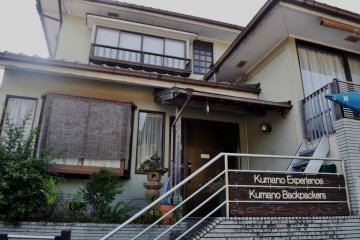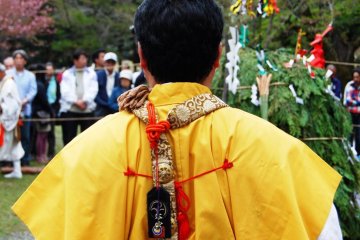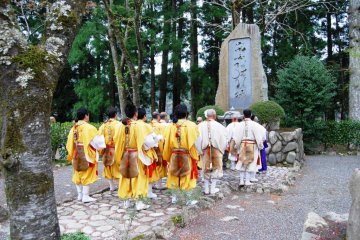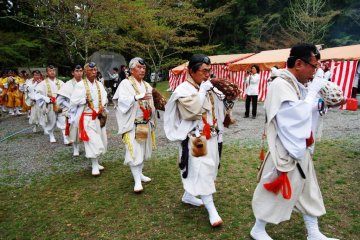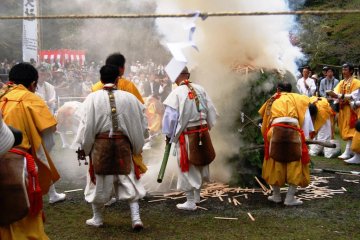Fire ceremonies at shrines and temples, called goma in Japanese, have become popular attractions but they have a deep symbolic meaning that only the initiated fully understand. Fire, like water, has purifying qualities and it is much used in Shinto and Buddhist ceremonies, as well as in Shugendo ceremonies.
Shugendo, literally "the path of training and testing" is a Japanese mystical-spiritual tradition with ancient roots. Followers of Shugendo, typically referred to as Yamabushi, or "one who lies in the mountains", are masters of Saito Goma (Great Fire Ceremony) which is performed outdoors.
Without understanding the meaning of all actions, these fire ceremonies are a unique experience that inspire all senses of those who watch. Watching the Yamabushi conduct various rituals before the fire is lit and then listen to their chanting throughout the fire ceremony, accompanies by taiko drumming and blowing in conch shells, is definitely a unique experience that can only be had in Japan.
Some visitors to Japan might have stayed at a Shukubo (temple lodging) on Koyasan and experienced an indoor goma fire ceremony there. For example, at Ekoin Temple. The outdoor goma happens on a much bigger scale but the spiritual meaning is the same: to purify body, mind and spirit; to destroy negative energies and invite a positive vibe; to pray to deities and petition them to grand some wishes. These wishes are written down on wooden prayer sticks, called goma ki, by visitors and participants. The Yamabushi who are inside the roped off sacred area where the pyre of wood is burning, will put these sticks into the fire in a ceremonial way.
This goma fire ceremony takes place at the Kumano Hongu Taisha on the last day of the Hongu Taisha Spring Festival in April each year.
Other famous fire-related events in the area are the Oto Matsuri in Shingu City in February and the Nachi Hi Matsuri in Nachi in July each year. The latter two fire festivals have their roots in ancient traditions and are not explicitly rooted in the Shugendo tradition.





